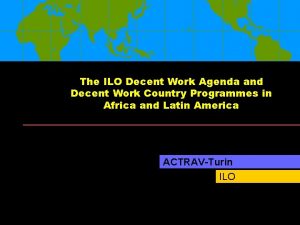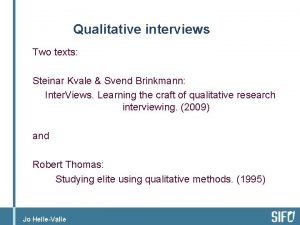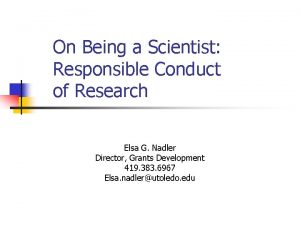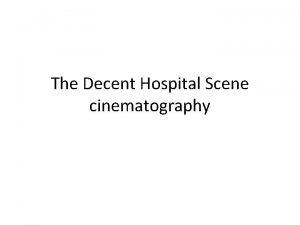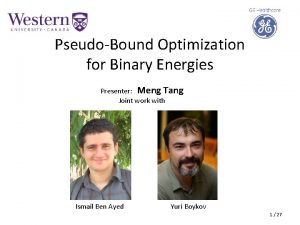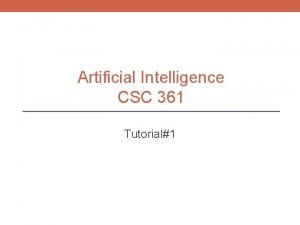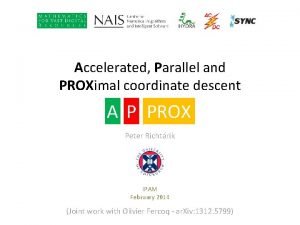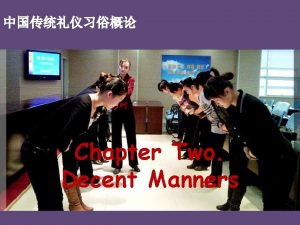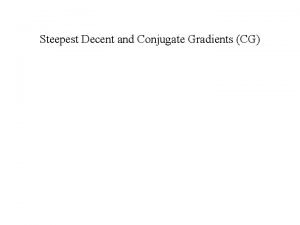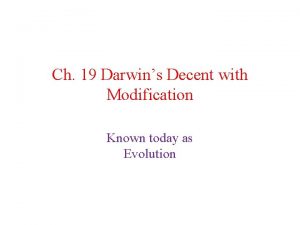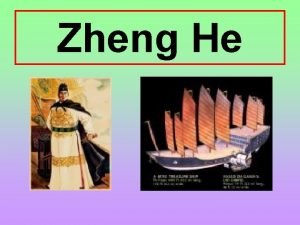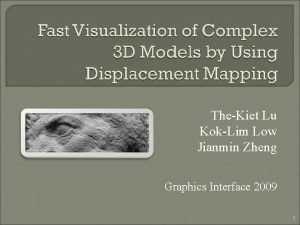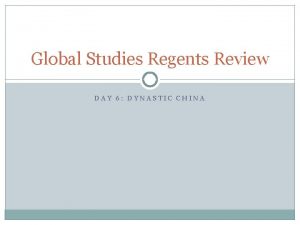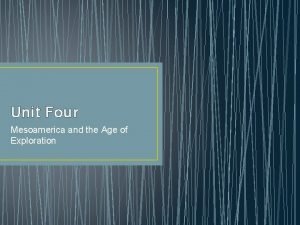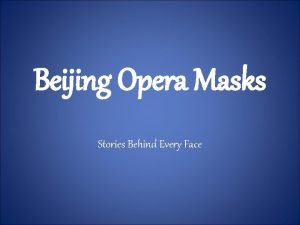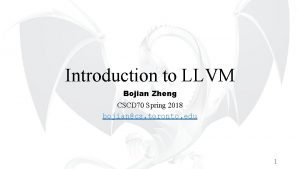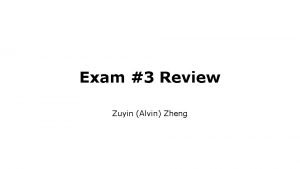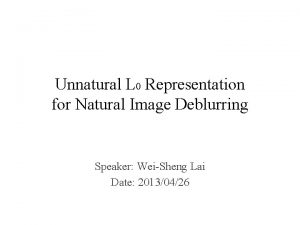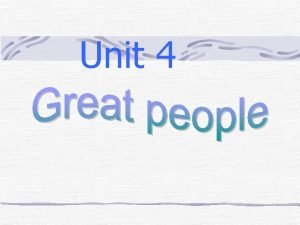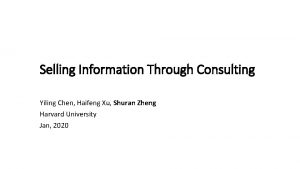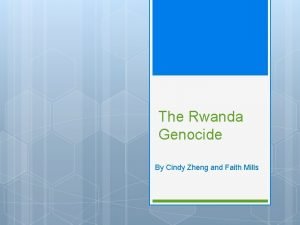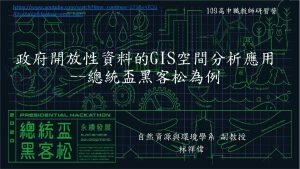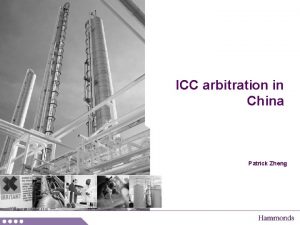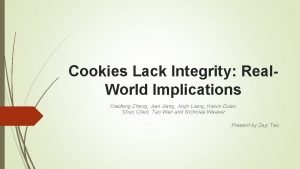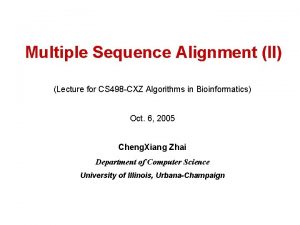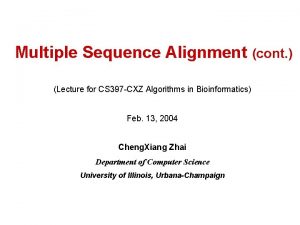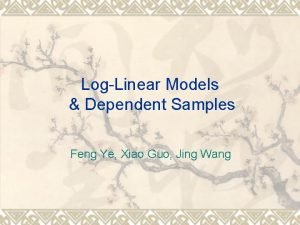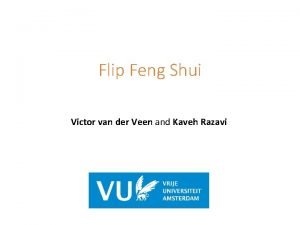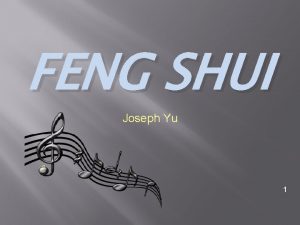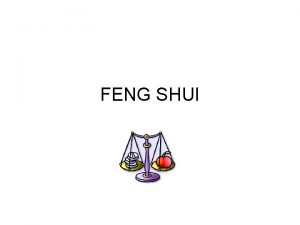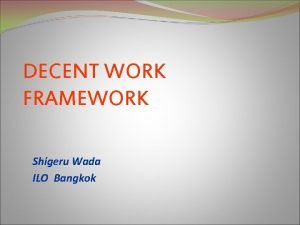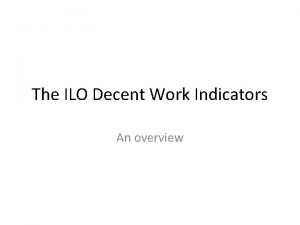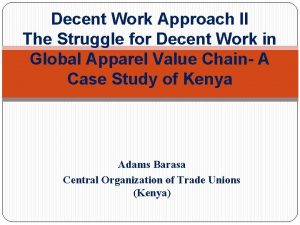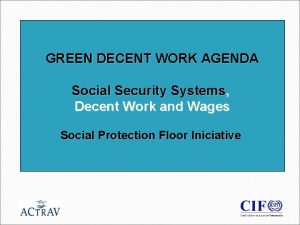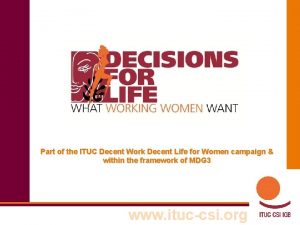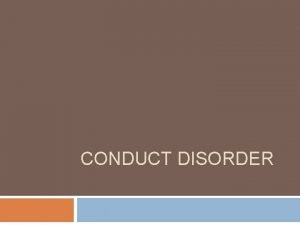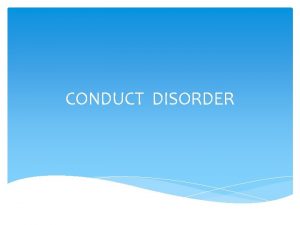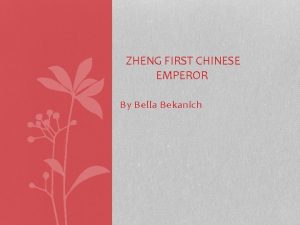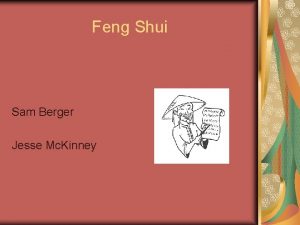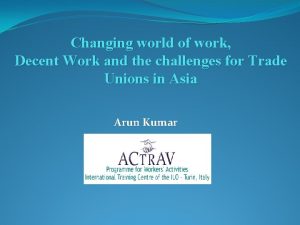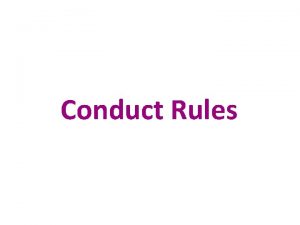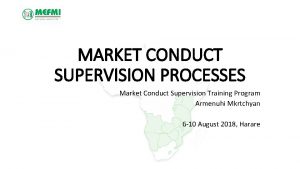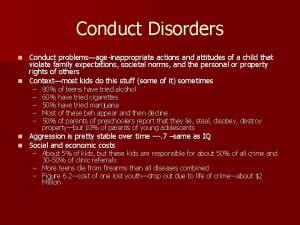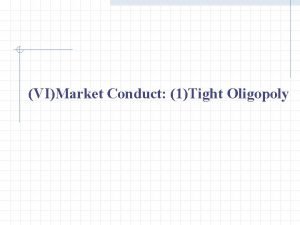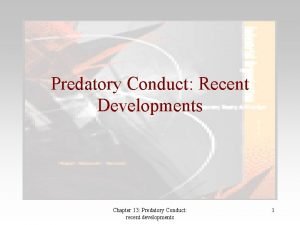How to Conduct Decent Research Work Feng Zheng





























- Slides: 29

How to Conduct Decent Research Work Feng Zheng, Ph. D. Materials Chemistry Central South University 两脚踏东西文化 一心评宇宙文章 1

Aims • Provide a simple but formal introduction to young researchers the basic strategy employed by peer-reviewed scientists around the world • Personal experience home and abroad • Suggestions for future work • Editorial work • Itches of translation/interpretation 两脚踏东西文化 一心评宇宙文章 2

Identify a Project • Literature search (up to now) • Introduction (why, what, how, what) – Why is/are this/these important – What has/have been done – How did they do – What was/were left (for you) and – What do you want to do • Theoretical work? • Experimental work? 两脚踏东西文化 一心评宇宙文章 3

Title • Proper words for your title • 好的开头是成功的一半 • A good beginning is half done. • Be caution when using on, investigation, research and study for title 两脚踏东西文化 一心评宇宙文章 4

Theory & Experiment Set-up • What do you want to do – Improve or against existing theory? – Provide more data? – Propose novel ideas? • How to achieve your goals – Better or reliable theoretical analysis – Better or new experimental results • Raw materials • Equipments • Experiment procedure 两脚踏东西文化 一心评宇宙文章 5

Results • New theoretical analysis (not ease) • For most engineering work we need: – Chemical composition – Structure – Mechanical properties – Physical properties – Etc. – In proper order 两脚踏东西文化 一心评宇宙文章 6

Analysis or Discussion • • How to describe your results How to make comparison with literature Why are your work important What are your contribution to science or engineering • What are your conclusions 两脚踏东西文化 一心评宇宙文章 7

Conclusions • What are your conclusions – Theoretical analysis – Experimental results – Work ongoing or suggestions 两脚踏东西文化 一心评宇宙文章 8

Abstract • What has/have been done • Most important results • Tune of past – was/were, has/have been 两脚踏东西文化 一心评宇宙文章 9

Acknowledgements • Financial support • Help for discussion and theoretical analysis • Help of technicians 两脚踏东西文化 一心评宇宙文章 10

Literature Citation • History of this work – Make yours part of the history – Later work has to cite your paper (important) • Style according to instruction for authors of chosen journal 两脚踏东西文化 一心评宇宙文章 11

Check list • • • Title (eye-catching) Authors (team work*) Abstract (concise) Introduction (story-telling) Experimental procedure (book-keeping) Results (book-keeping) Discussion (elegance, cross-reference) Conclusion (solid) Acknowledgements (polite) Literature citation (honest) 两脚踏东西文化 一心评宇宙文章 12

Text Layout • Keep it consistent throughout the manuscript. Double line spacing and 12 font is preferred: make it convenient for reviewers to make annotations. • Number the pages. • Number the lines if the journal requires to do so. 两脚踏东西文化 一心评宇宙文章 13

Length of Full Article “… 25 - 30 pages is the ideal length for a submitted manuscript, including essential data only. ” – Julian Eastoe, Co-editor, Journal of Colloid and Interface Science Title page Abstract 1 paragraph Introduction 1. 5 -2 manuscript pages (double-spaced, 12 pt) Methods 2 -4 manuscript pages Results and Discussion 10 -12 manuscript pages Conclusions 1 -2 manuscript pages Figures 6 -8 Tables 1 -3 References 20 -50 items Letters or short communications have a stricter limitation of the length. 14 两脚踏东西文化 一心评宇宙文章 For example, 3000 words with no more than 5 illustrations.

Submission • Where to publish your work – Impact factor – Scientific Community (bulletin, transactions and journals of well-established international or national society) • Electrical submission • Cover letter • Corresponding author 两脚踏东西文化 一心评宇宙文章 15

Communication to Editors • Acknowledge editorial work • Address exactly the questions raised by reviewers • Rebuttal with sound evidences 两脚踏东西文化 一心评宇宙文章 16

What Gets You Accepted? • • • Attention to details Check and double check your work Consider the reviews English must be as good as possible Presentation is important Take your time with revision Acknowledge those who have helped you New, original and previously unpublished Critically evaluate your own manuscript Ethical rules must be obeyed – Nigel John Cook, Editor-in-Chief, Ore Geology Reviews 两脚踏东西文化 一心评宇宙文章 17

Suggestions for Students • • • Lab records (experiment results) Literature reviewing (introduction & discussion) Talk to supervisor (bring copied articles & data) Discussion with other faculty/fellow students Write down anything of interest – Try to do one paper in one month! – This can be done and we have done and can do that in a regular base (once for each student). – "Everything should be made as simple as possible, but not simpler". – Albert Einstein 两脚踏东西文化 一心评宇宙文章 18

Samuel Johnson (1709 -1784) • Your manuscript is both good and original, but the part that is good is not original and the part that is original is not good. • What is written without effort is in general read without pleasure. • Knowledge is of two kinds. We know a subject ourselves, or we know where we can find information on it. • Curiosity is one of the permanent and certain characteristics of a vigorous mind. • Great English author, critic, & lexicographer; wrote "Dictionary of the English Language" 1747 -1755, novel "Rasselas" 1759, 10 volume "Lives of the Poets" 1779 -1781. Next only to William 19 Shakespeare. 两脚踏东西文化 一心评宇宙文章

Good References • Chicago Guides to Writing, Editing, and Publishing • The Chicago Manual of Style, 15 th Edition: CDROM for Windows (CD-ROM), June 15, 2007 (Note 1 st Edition in 1906) • A Manual for Writers of Research Papers, Theses, and Dissertations, 7 th Edition: Chicago Style for Students and Researchers, April 15, 2007 • The Craft of Research, 2 nd edition, March 2003 All by University of Chicago Press 两脚踏东西文化 一心评宇宙文章 20


翻译-编辑之痒与痛 • • • 春风得意马蹄疾 Happy horse runs fast in Spring (? ? ? ) 师范大学 Normal university (? ? ? ) 名利双收 • To have wild dreams of glory (围城英译) • To have wild dreams of gaining both fame and wealth? • 一年之计在于春, 一日之计在于晨 • One hour in the morning is worth two in the evening (? ) • Early bird catches the worm 两脚踏东西文化 一心评宇宙文章 22

Plagiarism and Data Fabrication • “Plagiarism is the appropriation of another person’s ideas, processes, results, or words without giving appropriate credit, including those obtained through confidential review of others’ research proposals and manuscripts. ” – the Federal Office of Science and Technology Policy, 1999. • 剽窃他人和剽窃自己以及数据造假都不行! • Automatic text check system underway 两脚踏东西文化 一心评宇宙文章 23

熟能生巧 • Every dog has his/her own days (人不可貌相, 人 生终有得意时) • Loss face (丢脸) • Dare to loss (one’s) face (不怕丢脸) • Practice makes perfect (熟能生巧) • Kills two birds with one stone 一箭双雕, 围魏救赵, 名利双收 • Funny little words: at, in, of, on, up, the etc. 两脚踏东西文化 一心评宇宙文章 24


Personal Experience • Cu out diffusion in Si wafer (UW) – • Nanosized Zn. O (CSU) – • Y. Chen, R. Z. Yu, Q. Shi, J. L. Qin, F. Zheng,Hydrothermal Synthesis of hexagonal Zn. O clusters,Materials Letter 4438 -4441. (2007) 61 High temperature electrode reactions (CSU) – • F. Zheng, Y. Chen, High temperature electrode reactions of Sr and Mg doped La. Ga. O 3 perovskite, J Mater Sci. , 43(2008)2058 -2065. DOI 10. 1007/s 10853 -007 -2423 -y B-C-Si-Zr ultra high temperature ceramics (CSU) – • F. Zheng and T. G. Stoebe, Low Temperature Out-Diffusion of Cu from Silicon, Journal of Electrochemical Society 146 (1999) 1238 -1240. H. M. Chen, F. Zheng, Z. P. Jin, Thermodynamic Assessment of B-Zr and Si-Zr Binary Systems, Journal of Alloys and Compounds, accepted Accepted with no change 两脚踏东西文化 一心评宇宙文章 26

Jokes • Around 2000, MIT students set-up a computer program to automatically generate several artificial research papers and submitted them to both conference and journal editors and those papers went through strict peer-review process and got published with no doubt at all! • Some Science and Nature papers are forged • “Half” Science and Nature papers could not be confirmed later (<1 year) 两脚踏东西文化 一心评宇宙文章 27

Metallurgy & Ceramic Fuel Cells • 中南矿冶学院材料系压加 792班 (1979~1983) • Metallurgy (1983 -94, China & UK) – Metallurgist by trade (BS, 1983) – Taught & worked on Metallurgy (1983~1992) – Metallurgist at Sheffield, UK (1992~1994) • Fuel Cells (1994 -2003, USA) – AWU Fellow @PNNL (1994~1999, SOFC) • LSM cathode, WSU, Master, 1996 • LSGM electrolyte, UW, Ph. D. , 2000 – Director of R&D @ NEI (00~01, PEM/ SOFC) – Chief scientist @ Hydrovolt (01~02, SOFC) – Visiting scientist @ LBNL (02~03, SOFC) • 中南大学材料学院教授 (2003~) 两脚踏东西文化 一心评宇宙文章 28

Materials Science Lecture Mathematics ! 家 MSE Processing 谢 大 谢 Composition MSE Properties-Performance Chemistry Physics Engineering Structure 两脚踏东西文化 一心评宇宙文章 29
 Ilo decent work agenda
Ilo decent work agenda Interview kvale og brinkmann
Interview kvale og brinkmann On being a scientist responsible conduct in research
On being a scientist responsible conduct in research Decent hospital
Decent hospital Coordinate decent
Coordinate decent Examine the ai literature to discover whether the following
Examine the ai literature to discover whether the following Coordinate decent
Coordinate decent Decent manner
Decent manner Steepest decent
Steepest decent Decent with modification
Decent with modification Zheng he timeline
Zheng he timeline Jianmin zheng
Jianmin zheng Dr xisui shirley chen
Dr xisui shirley chen Which phrase correctly describes the tang dynasty
Which phrase correctly describes the tang dynasty Should we celebrate the voyages of zheng he dbq answer key
Should we celebrate the voyages of zheng he dbq answer key It indicates ambition, cool-headedness, and fierceness.
It indicates ambition, cool-headedness, and fierceness. Cscd70
Cscd70 Zuyin zheng
Zuyin zheng Zheng
Zheng Zheng he
Zheng he Shuran zheng
Shuran zheng Cindy zheng
Cindy zheng Whyjay zheng
Whyjay zheng Patrick zheng
Patrick zheng Zheng jiang history
Zheng jiang history Feng doolittle algorithm
Feng doolittle algorithm Feng doolittle algorithm
Feng doolittle algorithm Feng guo symmetry
Feng guo symmetry Victor van der veen
Victor van der veen Cuatro pilares viento y agua
Cuatro pilares viento y agua
